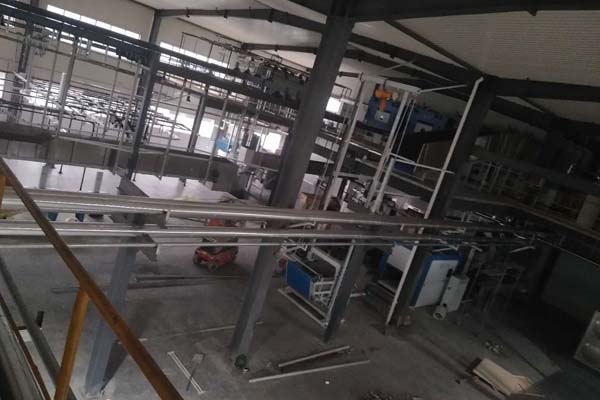Pipeline insulation layer is also called thermal pipeline insulation layer, which refers to the layer structure wrapped around the pipeline that can play the role of heat preservation and heat insulation. The pipeline insulation layer is usually composed of three layers: insulation layer, protective layer, and waterproof layer.Industrial pipeline insulation is important and economical. It ensures the normal transmission of liquid and gas in the pipeline, reduces energy loss, prolongs the service life of the pipeline, and saves economic benefits. These are the benefits of pipeline insulation.
In the pipeline rubber and plastic insulation processing, the workers of Tekmax Company first measure the dimensions of the insulated pipes, tanks, etc.Determine the roughly required rubber and plastics and other materials, prepare, and then follow the steps to carry out the iron sheet insulation construction and wrap the iron sheet On the surface of pipes and tanks that need to be insulated, use metal wires to hoop them to prevent the metal skin from falling off. The construction unit also needs to carefully wrap the raised parts such as pipes and equipment to ensure the expected thermal insulation effect.
1 The insulation of pipelines and equipment must be cleaned in trenches and tube wells, and the insulation can be carried out only when there is no further damage to the insulation layer in the next process.
2 Generally, the pipeline insulation should be qualified in the water pressure test, and the anti-corrosion can only be constructed, and the process cannot be reversed.
3 Rubber and plastic insulation materials should not be exposed to rain or stored in damp places when entering the site.
4 The debris left after heat preservation should be cleaned up by the team responsible for construction.
5 For the thermal insulation of exposed pipelines, if the civil works are sprayed, there should be measures to prevent pollution of the thermal insulation layer.
6 If there are special circumstances that need to remove the insulation layer for pipeline treatment or other types of work damage the insulation layer during construction, it should be repaired in time according to the original requirements.
Today, the editor will explain to you several methods of industrial pipe insulation.
1. Polyurethane foam insulation
In the Shaanxi Pipeline Thermal Insulation Project, the directly buried thermal insulation and anti-corrosion pipeline, referred to as pipe-in-pipe, refers to a composite pipe that is coated with anti-corrosion layer, thermal insulation layer and compression layer on the outer wall of the steel pipe. Especially suitable for areas with high groundwater levels. Compared with traditional trench laying pipelines, it has a series of advantages such as good thermal insulation performance, anti-corrosion, good insulation performance, long service life, simple construction and installation, small footprint, and low engineering cost. It has been widely used in central heating, Oil transportation, chemical industry, refrigeration and water supply projects in alpine regions.
2. Phenolic foam insulation
Phenolic foam insulation is a kind of foam plastic obtained by foaming phenolic resin. There are two types of resins used in the production of phenolic foam: thermoplastic resin and thermosetting resin. Due to the good process performance of thermosetting resin, phenolic foam can be continuously produced, and the product performance is better, so phenolic foam materials mostly use thermosetting resin.
3. Advanced rubber and plastic insulation
The high-grade rubber and plastic have good thermal insulation effect, and the insulation thickness used for the same pipe in Shaanxi pipeline is thin, and the amount is small; at the same time, it is an integrally formed thermal insulation material, the process is relatively simple, and the progress is fast; in addition, the high-grade rubber and plastic are green, environmentally friendly, and clean. Insulation materials have less waste during construction and are harmless to health. Advanced rubber and plastic insulation is more and more widely used in the insulation of refrigerant pipes and condensate pipes in air-conditioning refrigeration systems.
4. Polystyrene foam insulation
Polystyrene foam insulation has a closed-cell structure, low water absorption, good low temperature resistance, and good thawing resistance. Therefore, it is widely used in refrigeration equipment and cold storage equipment, such as freezers, cold air ducts, cold storage, etc. In addition, because polystyrene foam is non-toxic, non-corrosive, small in water absorption, light in body, heat preservation, mold forming, and acid and alkali corrosion resistance, it can be used for pipeline heat preservation for various purposes.

Post time: Aug-02-2021
